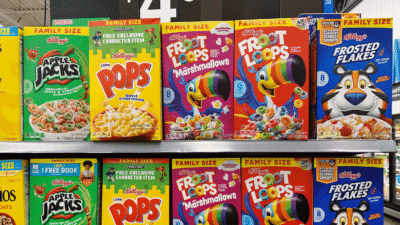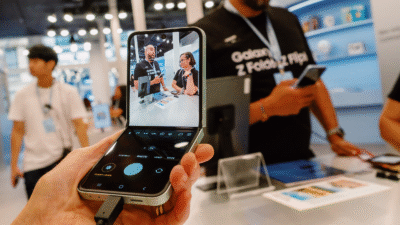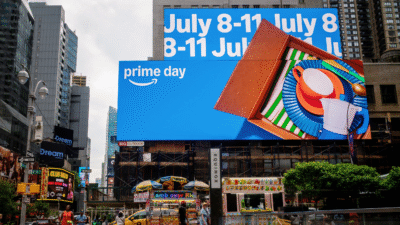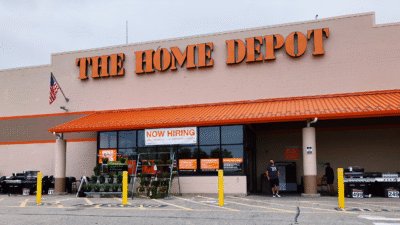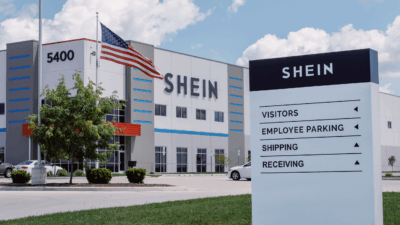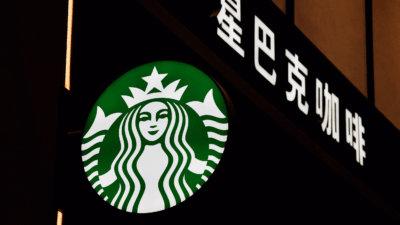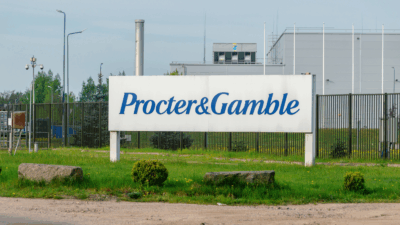Can Upstart Entrants Shake Up the Soda Industry?
Once thought to be fizzling, fizzy drinks are bubbling with growth and investment at a pace not seen in years.
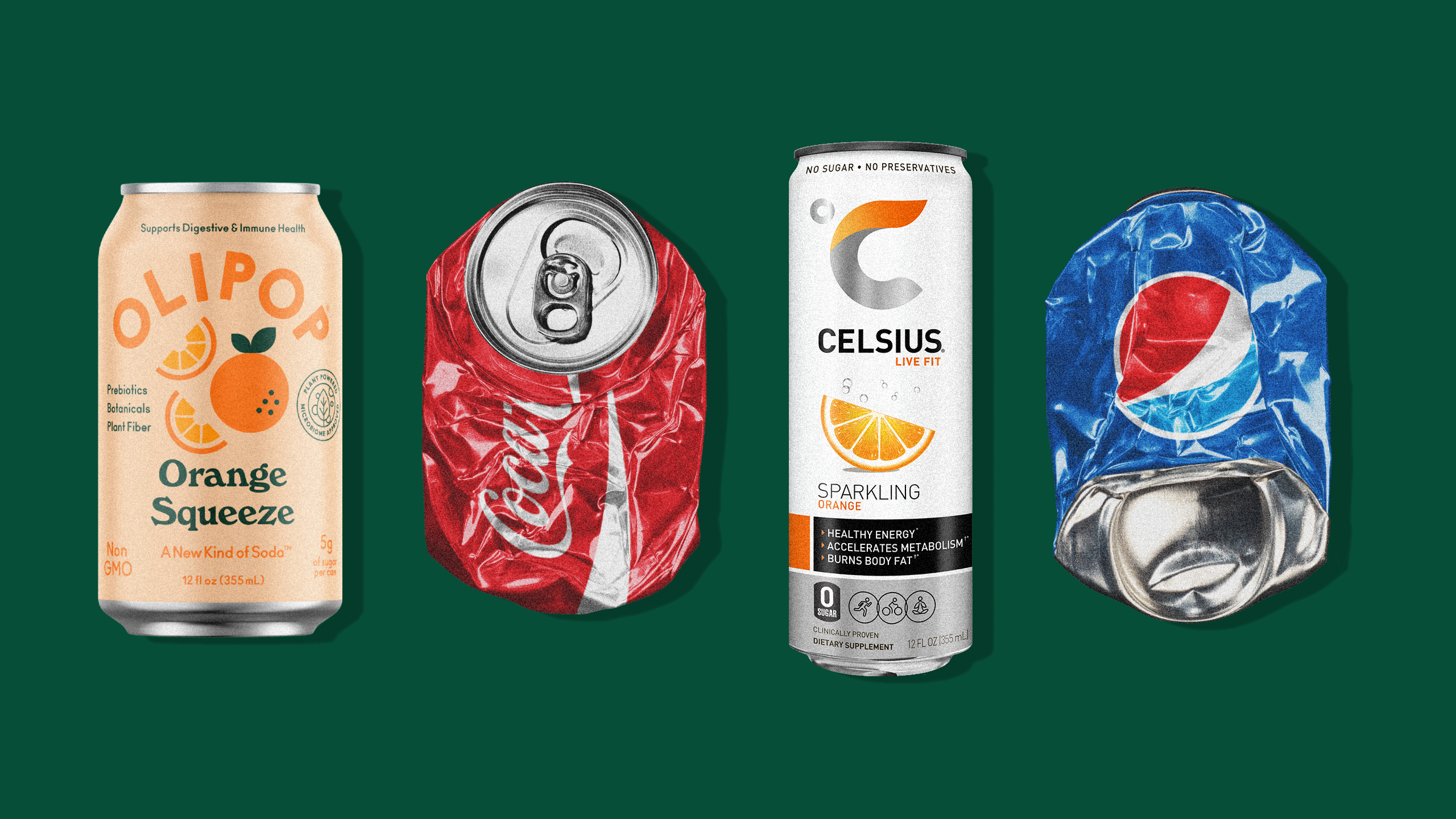
Sign up for smart news, insights, and analysis on the biggest financial stories of the day.
Once thought to be fizzling, fizzy drinks are bubbling with growth and investment at a pace not seen in years. But the most eye-popping news isn’t coming from the so-called Big Three — Coke, PepsiCo, and Keurig Dr Pepper. It’s coming from a collection of upstart firms — like Olipop, Poppi, Vina, United Sodas of America, and Zevia — that were unheard of just a few limited-edition Coke flavors ago.
Unlike the caramel colas of old, these new players hawk neon hues worthy of Miami’s Ocean Drive and cutting-edge flavors to match. Unlike legacy big-budget TV ad campaigns, their marketing is driven by cans with sleek designs perfect for influencer promotions and Instagram selfies. In some cases, they also promise a healthier “probiotic” alternative to the high-fructose corn syrup of their big-name competitors.
A Drop in the Carbonated Bucket
The Big Three still dominate the soda market: In 2021, they held a roughly 93% combined share of the US soft drink market. Coca-Cola reported $46 billion in revenue last year and PepsiCo reported $91 billion (PepsiCo’s product line includes food brands, and its beverages segment was responsible for about 41% of that). Keurig Dr Pepper, the smallest of the three, was a distant bronze with $14 billion in reported revenue.
Growth, however, has been harder to come by. Coke said sales climbed 3% to $11.3 billion in its latest quarter, but that was mostly driven by price increases — its global unit case volume increased 1% and its North American volume was flat for the quarter.
A week earlier, Pepsi reported sales rising 2.3% to $18 billion, but beverage segment growth stalled, and volume at its North American beverage unit fell 5% in the quarter. All told, the Big Three’s stocks have trailed the S&P 500’s rebound since last fall.
Nevertheless, Coke has increased its dividend every year for six decades and PepsiCo for five, making them both members of the exclusive “Dividend Aristocrats” club reserved for companies in the S&P 500 index that have increased their dividends for at least 25 years.
While growth may not be astronomical, fundamentals and a big market share mean steady payouts for investors (which is why steady-as-it-goes advocate Warren Buffett’s Berkshire Hathaway is Coke’s largest investor with a stake worth over $24 billion). In fact, Coke has a dividend yield that’s more than double the S&P 500 average.
New Fizz on the Block
But suddenly upstarts are exploding like a shaken can of seltzer.
Last week, soda startup Olipop told Bloomberg News that it expects $500 million in sales this year, more than double last year’s total and just five years after it made less than $1 million in 2019. The company, which counts celebrities including Gwyneth Paltrow and the Jonas Brothers as spokespeople/investors, says its sodas are stocked in 25,000 US supermarkets. The Information reported in March that Olipop is looking to raise $800 million just two years after it was valued at $200 million in a $30 million round. The report also said Olipop is profitable, according to a company source. The company has raised $43 million across five rounds, according to Crunchbase data.
Then there’s Poppi, which in February was the top-selling soft drink on Amazon, according to Fortune, with a 19% market share on the site (one-and-a-half times the size of Coke’s). Just like Olipop, the firm is equipped with a roster of celebrity investors, in this case Hailey Bieber, Kylie Jenner, and Billie Eilish. Poppi has raised $52 million across three rounds, according to Crunchbase.
Smaller brands like United Sodas of America and Vina have started to pop up as well, while new-ish brands like Zevia (founded in 2007) have taken advantage of consumers’ sudden appetite for new sodas.
Which, of course, begs the question: What’s drawing them in?
Fame, Flavor, and Fiber: A trifecta of factors have combined to lure consumers to this new wave of sodas.
Olipop and Poppi took a page from upstart sparkling water brand Liquid Death, worth $1.4 billion in its latest funding round, by pitching to the thirsty via aggressive social campaigns. But while Liquid Death’s campaigns were based on cheeky taglines like “Murder your thirst,” the soda brands are decidedly more optimistic, using a rainbow arsenal of flavors and can designs to turn mundane packaging into objets d’art readymade for influencers and social media users.
“The amount of people that now refer to us as ‘the TikTok soda’ is insane,” Steven Vigilante, Olipop’s new business head, told Ad Age last year. “We were in a Walmart shooting a commercial with [singer-songwriter-Olipop investor] Camila Cabello, and a family came up because we had a pallet of Olipop. They didn’t even notice Camila—they were just like, ‘It’s the TikTok soda!’”
Poppi, meanwhile, was nestling itself into the consumer habits of young people via TikTok stars like Emilie Kiser (2.8 million followers) and Mada Graviet (12 million followers) who you may have never heard of but your kids or nephews or little siblings have.
Olipop flavors include lemon and banana cream, and Poppi flavors range from raspberry to watermelon. In both cases, each flavor is sold in cans decked out in artfully designed bright colors that are immediately recognizable.
The focus on direct-to-consumer social marketing has made both massively influential online brands — Olipop, for example, has over 400,000 followers on TikTok compared to Coca-Cola’s 900,000, despite Coke’s annual sales being 90 times what Olipop is forecasting this year. Poppi has over 500,000 followers.
The last factor that has driven consumer interest is health, or at least healthy claims. Poppi and Olipop, as well as several smaller emerging soda upstarts, tout their beverages as containing considerably less sugar than traditional sodas — an important consideration for increasingly health-conscious consumers — and also in a new category of soft drink: “prebiotic.”
This means they contain inulin, a kind of fiber that’s extracted from chicory root and that feeds the micro-organisms in your digestive system (probiotics, on the other hand, refers to supplements that contain live micro-organisms). The companies have used this to market their products as good for digestion and gut health — one brand, Vina, has even said its drinks are good “for the brain.”
Scientists, however, are skeptical. “If they’re marketing them as having a major prebiotic effect, that’s an exaggeration,” Marion Nestle, an emeritus professor of nutrition at New York University told the Washington Post last year. “The evidence behind it? Not so strong.” While Americans have routinely been reported to eat insufficient amounts of fiber, experts told NPR they were better off eating sweet potatoes, oats, berries, apples, and other fruits and vegetables to close the gap.
Handing them the Playbook: Coca-Cola is forecasting 6% to 7% organic sales growth this year, and Pepsi expects 4%. The strength of their brands, among the most iconic anywhere, has given them leverage to increase prices with limited blowback.
And, while it’s simply implausible for the growth of mature companies like these to match the rate of startup competitors, there’s plenty of evidence that they’re watching and studying their meteoric rise.
In February, Coke launched its first TikTok exclusive beverage, a calorie-free, mineral-infused cola dubbed Happy Tears. You can only get it via the social network’s e-commerce platform.
And then there’s simply the fact that, with their enormous market share and resources, any of the Big Three soda makers could simply buy their way into these emerging segments. In 2022, Pepsi invested $550 million for an 8.5% stake in energy drinks firm Celsius, which also markets its products as having health benefits. In 2020, it bought Rockstar Energy for $3.8 billion. Coca-Cola snapped up Vitaminwater for $4.1 billion in 2007.
In which case, the tagline writes itself: “I’d Like to Buy the World a Prebiotic.”

